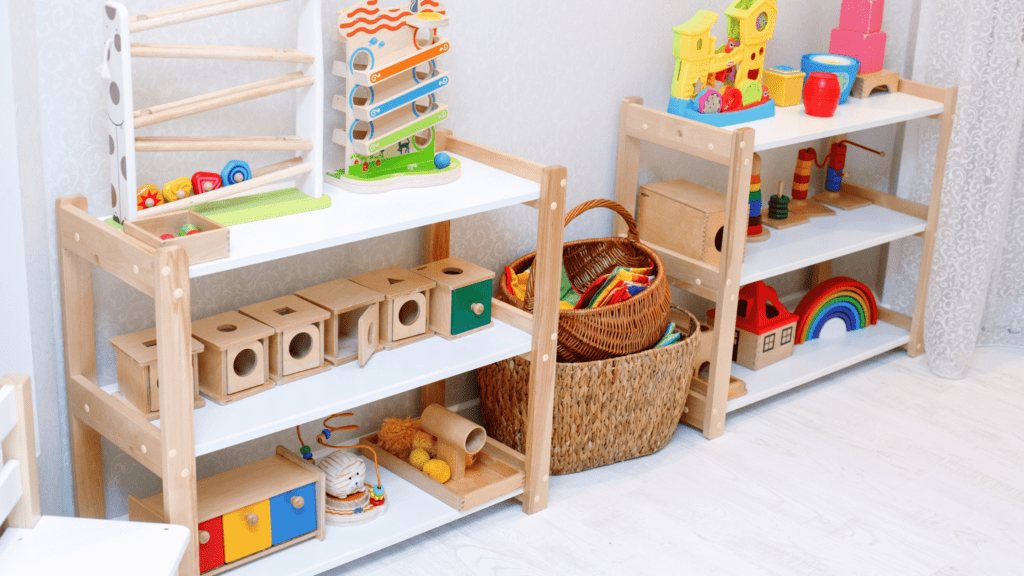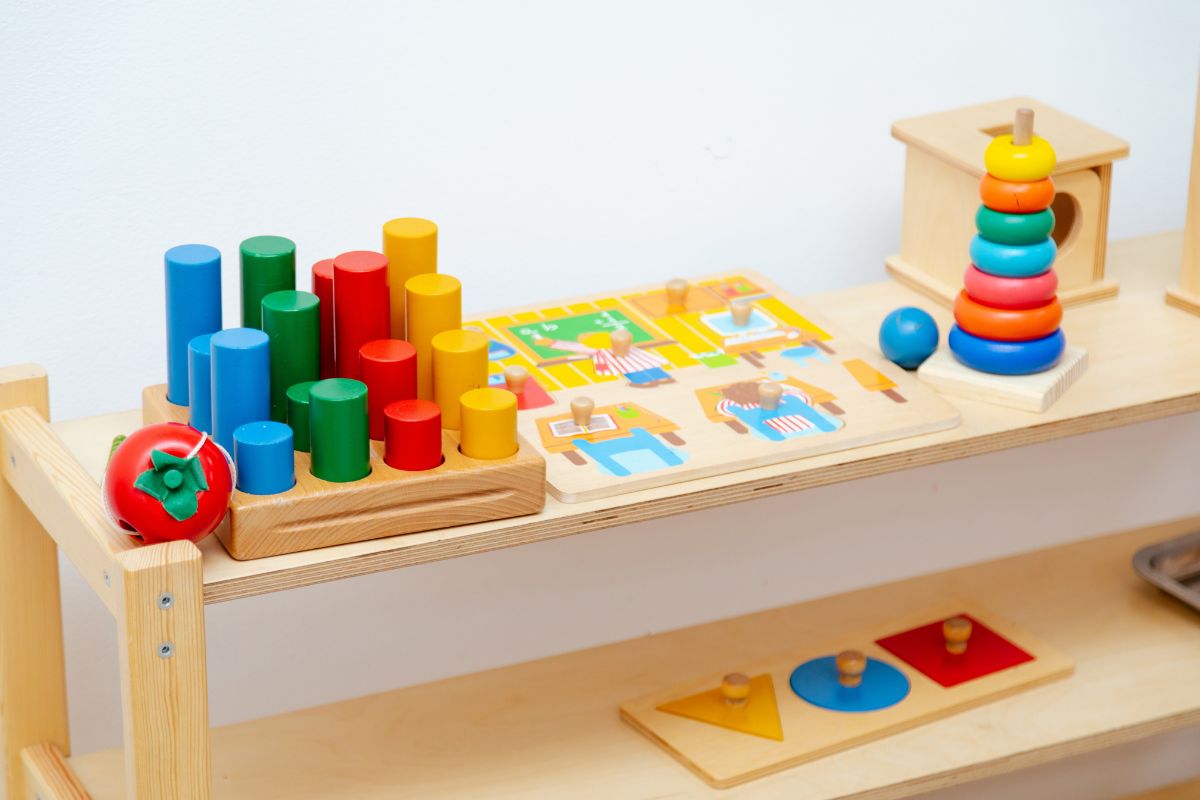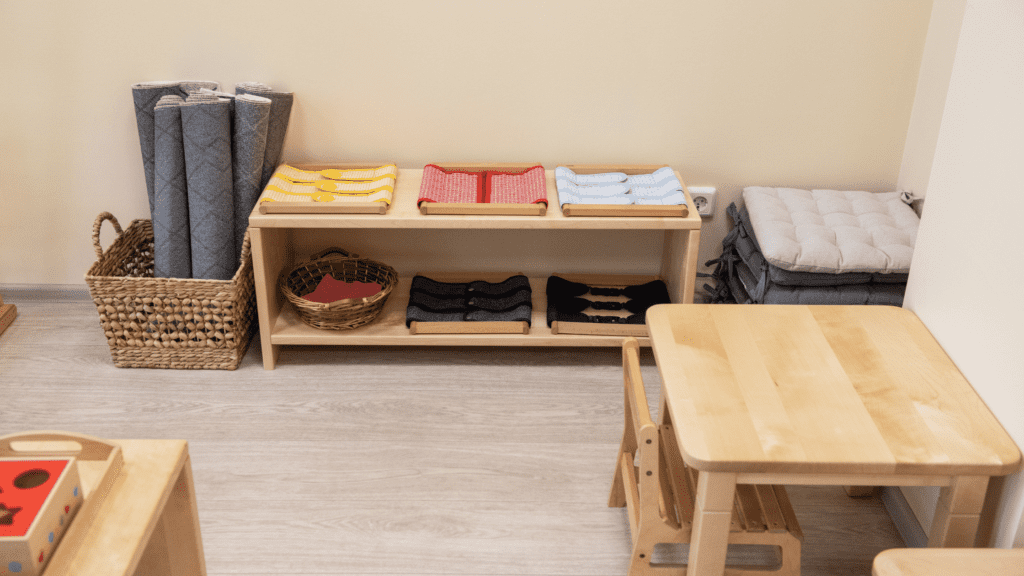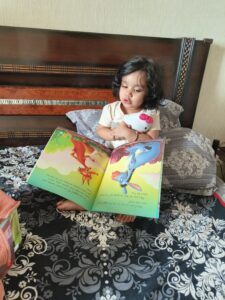Play is a vital component of a child’s growth, influencing their physical, social, and cognitive development from infancy. Montessori toys have gained recognition for their ability to enhance learning through play, promoting skills such as problem-solving and fine motor development. However, constant exposure to the same toys can lead to diminished interest and engagement. This is where Montessori Toy Rotation steps in!
In this article, we will explore the concept of toy rotation, its advantages, and effective practices to incorporate it into your child’s playtime. Before diving into toy rotation, it’s essential to grasp the significance of a Montessori shelf in a child’s development.
What is a Montessori Shelf?
A Montessori shelf is a specially designed low table or shelf that provides children access to age-appropriate materials and activities, carefully chosen to enrich their learning and development. These materials and activities aim to foster independence, curiosity, and exploration in children.
“The way in which materials are presented to the child is of the utmost importance. They must be attractive and inviting, and they must be presented in a way that allows the child to explore them independently.” – Maria Montessori
What is Montessori Toy Rotation?
Montessori Toy Rotation is a practice involving periodic changes to the selection of toys on a Montessori shelf or table. The primary objective is to keep children curious, engaged, and open to new learning experiences.
According to a study titled “The influence of the number of toys in the environment on toddlers’ play,” providing children with fewer toys in their environment can lead to longer periods of play focused on exploration and creativity (Dauch et al., 2017).
By thoughtfully selecting and rotating toys, you can create an environment that encourages exploration and sparks a child’s imagination.
5 Benefits of Montessori Toy Rotation
Here are some of the benefits of providing a limited selection of toys to children, allowing them to access these toys without parental or educator assistance.
- Stimulating Creativity and Imagination: A thoughtfully curated toy selection enables children to explore their creativity and imagination. For instance, open-ended toys like wooden blocks or play silks can transform into anything their minds envision, from towering castles to cozy hideouts.
- Reducing Overstimulation and Promoting Focus: A clutter-free play space with a limited number of toys promotes focused play. By rotating toys, children are not overwhelmed by choices, allowing them to immerse themselves in the current activity and delve deeper into their play experience. This also helps maintain an uncluttered space, providing more room for exploration.
- Encouraging Independent Play and Problem-Solving Skills: Interaction with rotated toys teaches children to entertain themselves independently, fostering self-reliance and problem-solving abilities. For instance, a child presented with a puzzle will develop critical thinking skills while figuring out how to fit the pieces together.
- Cultivating a Sense of Order and Responsibility: Montessori Toy Rotation instills a sense of order in a child’s play area. Children learn to return toys to their designated places after playtime, fostering a sense of responsibility and organization.
- Reducing Boredom: Rotating toys exposes children to various activities, reducing the likelihood of boredom or disinterest, which can lead to behavioral issues.
Why Rotate Toys Periodically?
In Montessori education, toy rotation involves not only introducing new toys but also ensuring that toys and activities align with the child’s developmental stage and interests. The frequency of toy rotation varies based on the child’s age, learning preferences, and sensitive periods.
When to Rotate Toys for Optimal Child Development?
Toy rotation can be scheduled weekly, monthly, or seasonally, depending on the child’s interests and skill development. Generally, consider rotating toys every 1-3 weeks. However, if a child is still actively learning with a particular toy, refrain from replacing it on the shelf. Younger children and infants may benefit from more frequent toy rotations, while older children often enjoy extended playtime with the same materials. Additionally, consider rotating toys when a child shows disinterest or has fully mastered the skills related to a specific toy. This approach enables you to introduce new toys that provide fresh challenges, igniting the child’s curiosity and learning.
5 Ways to Implement Montessori Toy Rotation?
Here are the steps involved in the toy rotation process, grounded in Montessori principles:
Assessing and Categorizing Toys:
Begin by assessing your child’s toys and categorizing them based on their developmental stage and interests. Look for toys that promote various skills such as fine motor, gross motor, sensory exploration, or role-play. Categorizing the toys ensures a balanced and enriching rotation covering different aspects of your child’s development.
Determining the Frequency of Rotation:
The frequency of toy rotation depends on your child’s needs and attention span. Some children may benefit from daily rotations, while others may prefer weekly or monthly changes. Observe your child’s play patterns and identify when they start losing interest in specific toys. This will guide how often you should rotate toys to maintain their engagement and curiosity.
Creating a Toy Rotation Schedule and Storage System:
Once you’ve assessed the toys and decided on the rotation frequency, create a schedule that aligns with your child’s daily routine. For example, plan toy rotations in the morning before your child starts their learning activities. Invest in low, open shelves that facilitate easy access to the toys, enabling your child to choose activities independently and return them when finished. Avoid rotating all Montessori materials at once to prevent overwhelm. The setup should be child-friendly and organized to promote autonomy and responsibility.
Involving the Child in the Selection and Setup Process:
Engage your child in the toy rotation process to empower them and nurture decision-making skills. Set aside time to involve them in selecting toys for each rotation and arranging them on the shelves. Seek their input and preferences to make them feel included and excited about the process. This encourages independence and fosters a sense of ownership over their play area.
Tip for Setting up Montessori at Home:
Maintain a mix of work areas, including two materials from practical life, one from sensorial, two from culture, and so on. This helps understand your child’s interests and promotes overall development.
Frequent toy rotation nurtures a child’s love for learning and enriches their play experience, promoting comprehensive development. It encourages exploration, sparks creativity, and fosters independent learning while maintaining an organized and engaging play area for your child.
In Conclusion
Montessori Toy/Material Rotation goes beyond mere toy organization; it represents an intentional approach to nurturing a child’s growth and learning through play. By creating an environment that stimulates creativity, encourages focus, and promotes independent exploration, we empower our children to become confident, curious, and capable individuals. This approach enhances the magic of childhood, making each playtime a meaningful and joyful experience for both children and parents.
We invite you to share your thoughts and stories with us. Let’s deepen and strengthen the bond of learning for our children.






